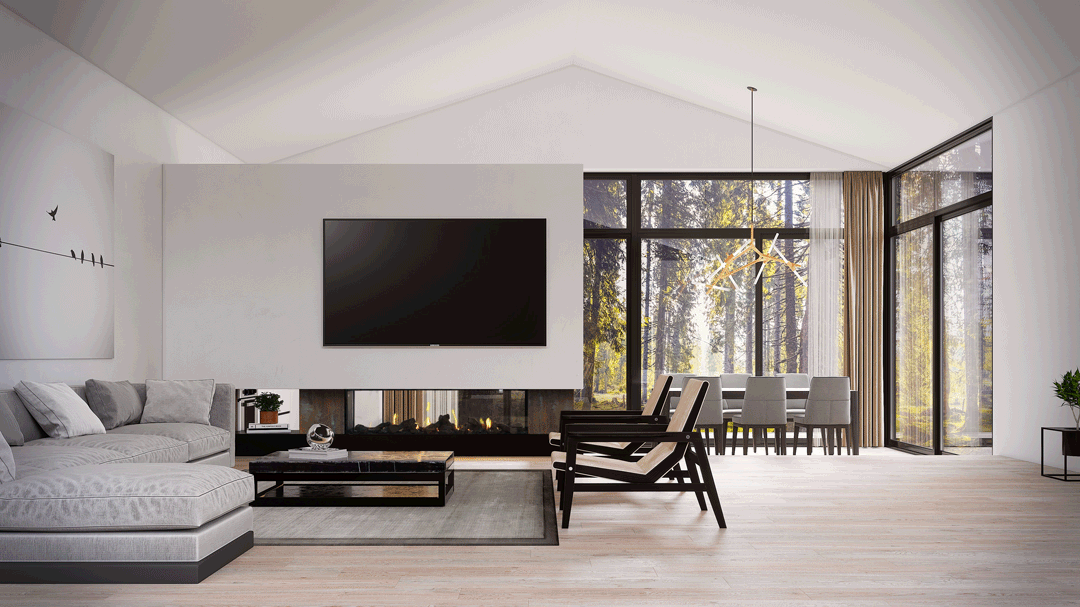Author of The Lean Minimalist blog Donna Sherriff shares her top tips so you can start living a minimal life at home.
We’ve all seen beautiful images of minimalist interiors; white, aesthetically stark, peaceful and beautiful are all words that might come to mind and are examples of what many think is the minimalist ideal. Often these ideals are architectural marvels of design, outside the wildest dreams and reach of the average homeowner.
However, minimalist living is more than an aesthetic, it's a mindset. While some minimalists do pursue a simple, clean, zen look in their homes, many do not. Painting all your walls white is not a free ticket to a minimalist lifestyle. My house is full of kids, pets and the general chaos, yet we would happily say that we are pursuing minimalism as a family lifestyle.

While some minimalists prefer pared-back white walls, minimalism is a mindset rather than an aesthetic.
Minimal living is about the creation of freedom. Freedom to pursue things that are important by reducing the sheer volume of things that are not. Here are a few tips for minimal living that can help get you on the right path without repainting the interior of your house:
Tip #1: Make sure you understand what you value
Minimalism starts with values and beliefs. Have you ever had a moment when you say to yourself ‘I wish I could just…’ or ‘If only I had more time to…’? These kinds of internal questions are indicators that it's time to get your priorities straight. What is important to you? If there were no barriers or obstacles in the way, what would you choose to do with your life?
Minimalists clearly understand what they value in life and begin to modify their environment, lifestyle, commitments and even thought processes to better align with these values. Underpinning this is often the desire to simplify life and get back to basics. There are no rules; values are completely individual and personal.
Tip #2: Align your possessions with your values
Once you’ve got your values straight, you can start looking at your possessions in terms of how they support your values. How is that yearbook from high school adding value to your life right now? What about that set of coasters you bought overseas but have never used and are collecting dust in the back of a cupboard. Start asking, would my life be simpler, easier, better with less things in it? Before you say ‘Oh no, I could never part with that!’ think about whether you have gotten any use or satisfaction out of it lately. Some things we own we spend more time cleaning and maintaining than actually enjoying. Just remember, minimalism is a personal journey so start with yourself before you think about tossing out your partner’s prize collections.

Assess your personal possessions like books and gifts and ask yourself how much value they add to your life.
Tip #3: Face your closet
In reality, most people only wear a fraction of the clothes, shoes and accessories they own. Most of us have items in our wardrobe that we haven’t worn for years. Sometimes we’re keeping them just in case, for special occasions or for sentimental reasons. We also have a tendency to keep things that don’t look good on us because we liked the colour or style when we bought it. These are the items that we put on and take straight back off again but just can’t seem to let go of.
People that follow a more minimal path tend to have a number of staples in the closet of their favourite things. They gravitate towards items that look good with everything. The benefit of a minimalist closet is that you get to wear your favourite things every day.

Minimalists tend to have a smaller number of staples in their wardrobe that they wear often rather than holding onto clothes that they never wear or don’t go with everything.
Tip #4 Get unbusy
Busy is a choice. Minimalists say ‘no’ to some things so that they can say ‘yes’ to what they value. While this will be different for everyone, it will generally relate to commitments that are no longer moving you in the direction you want to go. This doesn’t work for all commitments, especially if you have kids, but it is a useful exercise to sit down and work through everything you ‘have to do’ to make sure you really ‘have to do’ it. A great method for this is working out commitments by dividing them into three categories: 1) activities that fit in with your values, 2) activities you have to do to survive or meet obligations and 3) activities that are nice to have or could be let go.

Minimalists say ‘no’ to things so that they can say ‘yes’ to what they value, like spending time with family and friends.
Tip #5 Bye bye distractions
How much time do you spend scrolling, reading feeds, answering tweets or watching the latest YouTube videos? To achieve a more minimal way of living, start weeding out those distractions that are preventing you from spending time on what you value. Sure, you may miss out of the latest cat video to hit social media but you’ll appreciate the mental silence that comes with minimising distractions. Again, this is a personal choice and only you can assess the best use of your time and attention.

Minimalists remove distractions from their life like spending unnecessary hours browsing on their phones.
Tip #6 Anything goes
What else can you simplify? Anything you can think of is up for assessment against your values. This could include finances and debt, your DVD collection, your holiday commitments or even your email inbox. What are you keeping all those old emails for anyway?









